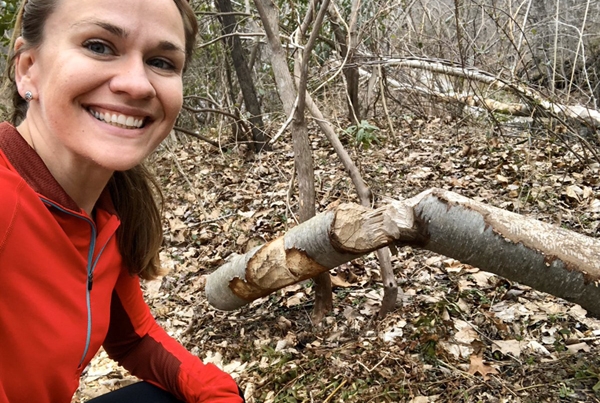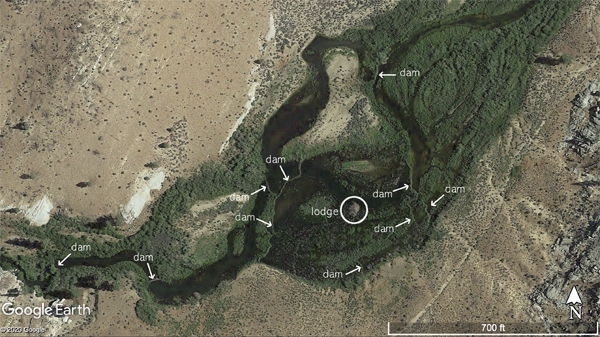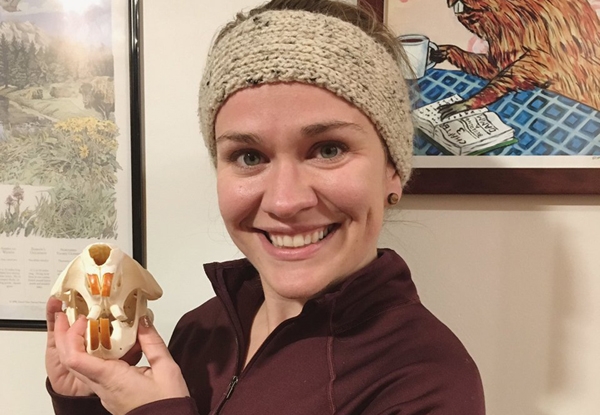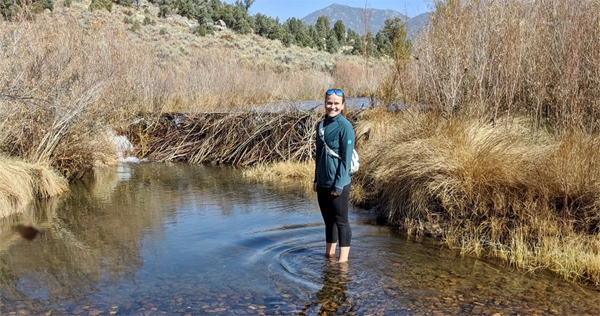
“When I came face to face with beaver dams for the first time, I had what can only be described as a transformative experience,” says Emily Fairfax, an assistant professor of environmental science and resource management at California State University, Channel Islands. While leading a canoe trip through the Boundary Waters of northern Minnesota, she encountered what she describes as “just these enormous, impressive features” – created by beavers. “You truly realize how sturdy beaver dams are while dragging your canoe over them,” she adds, laughing. “They are incredible from an engineering perspective.”
Despite being taken by the handiwork of beavers in that initial encounter, Fairfax says “I just put that experience in my back pocket for a long time.” After majoring in chemistry and physics in college, she went on to work as an engineer. “But, I kept going fishing, visiting wetlands and creeks, and realized I wanted to be out in these places in my day to day life.”
“Then, I watched the documentary Leave it to Beavers. It was about how beavers fundamentally alter landscapes. I was reminded of the beavers I'd seen in Minnesota and was like, I want to study this. On a bit of a whim, I applied to graduate school, and haven't looked back. Now it's all beavers, all day, and they make me so happy. It turns out rather than being an engineer, I was called to study nature's engineers.”
The documentary also piqued Fairfax's interest in something she hadn't considered: beavers in the desert. “I was struck by these aerial shots of beaver dams in the desert, surrounded by green. At the same time, there were so many news articles about droughts and how everything was drying up. Except the beaver ponds, which were still green and still had water, but I couldn't find any quantitative research behind it.”
Fairfax began to examine satellite imagery of beaver ponds and the large complexes of beaver dams that exist all over the U.S. “The great thing about using remote sensing tools is that I can look back decades and see how the surrounding vegetation responded to beavers during droughts.” Fairfax found that the trees and plants around beaver ponds stayed as green as nearby irrigated agriculture fields. “In essence, beaver ponds made it so surrounding areas didn't experience drought.”

That finding led Fairfax to her current interest in beaver ponds as refuge areas during wildfires. “Again, I would see news stories about dry vegetation as ‘kindling' for wildfires. I started to wonder if beaver dams and ponds might reduce the flammability of the surrounding vegetation. I found that while beavers can't exactly put out fires, they can create what I think of as ‘ribbons of fire resistant landscape.' And that ribbon effect is consistent across different topographies, ecosystems, and climates. Beavers create critically important refuge for many different plants and animals to survive fires,” she says.
Trying to succinctly explain her work led Fairfax to develop what became a viral animation short. “I was job searching and needed an ‘elevator pitch,' but I was struggling with it. I had a mental image that never quite came across in words. I'm not good at sketching, but I had my phone camera and a small beaver toy. It dawned on me that I could make a stop motion animation. I downloaded an app and set up my kitchen table with a cork board I had in the house, leftover fake plants from my wedding, rocks from outside, and felt I had for crafts. Then I just sat there filming while moving the little toy beaver around.”
“All in all, it took four hours to put together this 45 second video. I posted it on Twitter, where I had about 50 followers, but figured at least other beaver people would enjoy it. Then I went on a hike with no phone service. When I got back, a friend had messaged me to say I needed to look at Twitter, and it turned out it had just exploded. There were thousands of views already, which I hadn't expected at all. I think part of what made it engaging was that it was short and all visuals and music with no language, so it was easily shared.”
Fairfax says the best part was not how many people watched it, but that so many people from all over the world wanted to ask her about beavers. “By responding to people's questions, sometimes using Google translate, I got good at being concise because I only had 240 characters. I responded to everyone and wanted people to feel heard. That's ultimately why I do science communication – I want people to be able to ask me science questions, especially about beavers.”

Fairfax notes that there is still a lot of misinformation about beavers. Because they do chew and knock trees down, and create ponds that can lead to flooding, they can be seen as problematic. “Every state, and sometimes county, handles beavers differently. In the last decade or so, there have been advancements in non-lethal beaver management that are more cost-effective than, for example, removing a beaver dam with dynamite. Plus, if you try to remove a beaver, it's inevitable another one will show up, so it's best to learn how to live with them and understand the good they do. For example, that flooding they can cause is also recharging groundwater.”
Working in California, Fairfax's biggest task now is locating beavers. She notes that before beaver trapping there were likely upwards of 400 million beavers in North America, meaning they were everywhere. “Trapping took them down to 100,000, and now estimates put them back up to 10 or 20 million. They are prevalent in certain areas like the Colorado Rockies and the Sierra Nevada, but we still don't see them often in many downstream areas that provide great habitat.”
For now, she says, “I've got students hiking streams just looking for signs of them, and when I give public talks, people will sometimes tell me about how they used to see them on a creek in the 70's. That might not seem relevant, but that kind of information is so valuable. So now I'm basically saying to people, if you see a beaver dam anywhere in California, please tell me about it!”
Follow Dr. Fairfax on Twitter @EmilyFairfax.
